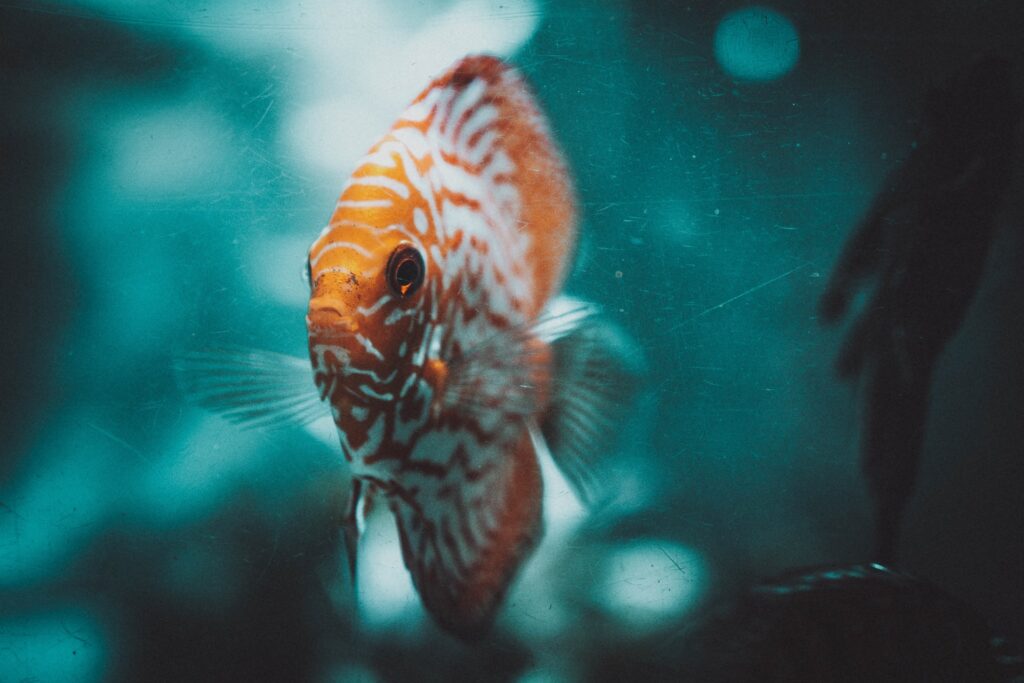
The world of aquarium keeping is filled with a vast array of exotic and beautiful fish species, each offering its unique charm and appeal. Among these aquatic gems, the Discus fish stands out as a true icon of grace and elegance. With its vibrant colors, striking patterns, and gentle demeanor, the Discus fish has captured the hearts of aquarists around the globe. In this comprehensive article, we will dive deep into the world of Discus fish, exploring their origins, care requirements, stunning varieties, and why they continue to be prized inhabitants of aquariums.
The Origins of Discus Fish
The Discus fish, scientifically known as Symphysodon, hails from the Amazon River basin in South America. This region, renowned for its rich biodiversity, is home to several species of Discus, with Symphysodon aequifasciatus, Symphysodon discus, and Symphysodon tarzoo being the most well-known. These fish inhabit slow-moving, clearwater rivers and are often found among submerged tree roots and aquatic vegetation.
The name “Discus” is derived from their distinctive round and flat body shape, resembling that of a disc or a saucer. In their natural habitat, Discus fish exhibit a remarkable range of colors and patterns, which vary based on factors like water chemistry, diet, and location.
A Prism of Colors and Patterns
One of the most captivating aspects of Discus fish is their wide spectrum of colors and intricate patterns. Discus enthusiasts have selectively bred these fish over many years to develop an astonishing array of color variations and patterns. Some of the most popular Discus varieties include:
- Red Turquoise Discus: Characterized by its striking red and turquoise markings, this variety is a favorite among Discus enthusiasts. The vibrant contrast between red and turquoise makes it a showstopper in any aquarium.
- Blue Diamond Discus: As the name suggests, the Blue Diamond Discus features a deep blue body with a diamond-shaped pattern, creating an exquisite and regal appearance.
- Checkerboard Discus: With a black and white checkerboard pattern, this Discus variety exudes a classic and timeless elegance. The precision of the squares on its body is a testament to the artistry of selective breeding.
- Pigeon Blood Discus: Known for its intense red coloration, the Pigeon Blood Discus is a vibrant and eye-catching addition to any aquarium. Its rich red hue is reminiscent of the beauty of a pigeon’s blood.
- Snakeskin Discus: The Snakeskin Discus features a labyrinthine pattern that resembles the scales of a snake. This intricate pattern adds a sense of mystery and allure to these fish.
- Albino Discus: Albino Discus lack pigmentation, giving them a unique, almost translucent appearance. Their bright red eyes and soft pinkish body create a captivating contrast.
Aquarium Setup and Care
Successfully keeping Discus fish in an aquarium requires careful attention to their specific care requirements. While they are undoubtedly stunning, Discus are also known for being sensitive and demanding when it comes to water quality and tank conditions. Here are some essential considerations for setting up a Discus aquarium:
Tank Size: A spacious tank is essential for Discus, as they thrive in groups and require ample swimming space. A tank of at least 55 gallons is recommended for a small group of Discus.
Water Parameters: Discus prefer warm, soft, and slightly acidic water conditions. A temperature range of 82-88°F (28-31°C), a pH level of 6.0-7.0, and very low hardness are ideal for their well-being.
Filtration: High-quality filtration is crucial to maintain clean water. Canister filters or sponge filters are often preferred to minimize water flow, as Discus are not strong swimmers.
Tank Décor: Discus appreciate a well-planted aquarium with plenty of hiding spots among driftwood and plants. The natural environment should resemble their Amazonian habitat.
Diet: Offering a varied diet is essential for their health. High-quality pellets, flakes, and frozen or live foods like bloodworms and brine shrimp should be included in their diet.
Water Changes: Regular water changes are a must to maintain pristine water quality. Some Discus enthusiasts change up to 50% of the water weekly.
Peaceful Companions: Discus are peaceful fish and do best when housed with equally non-aggressive tankmates. Consider adding species like cardinal tetras, corydoras catfish, and peaceful dwarf cichlids.
Breeding Discus
Breeding Discus fish can be a rewarding endeavor for experienced aquarists. These fish are known for their elaborate courtship rituals and dedicated parenting. Successful breeding requires optimal tank conditions, stable water parameters, and a balanced diet.
Breeding pairs will often clean a flat surface, such as a broad leaf or a piece of slate, to lay their eggs. The eggs are transparent and adhesive, attaching to the chosen substrate. Both parents guard the eggs and fan them to ensure proper oxygenation. After about 3 days, the eggs hatch, and the fry are cared for by their parents.
Raising Discus fry can be a delicate process, as they require special nutrition and care. Many hobbyists choose to set up a separate fry tank to provide the best conditions for their growth.
Discus fish are a captivating and mesmerizing addition to any aquarium. With their remarkable colors, intricate patterns, and peaceful nature, they have earned their place as one of the most sought-after species in the world of aquatics. While they do require specific care and attention to thrive, the effort is well worth it for those who are captivated by their elegance and beauty.
Whether you’re a novice aquarist looking to start your first Discus aquarium or an experienced hobbyist eager to expand your collection, Discus fish offer a world of wonder and endless fascination. These graceful aquatic gems continue to enchant and inspire aquarium enthusiasts, reminding us of the stunning diversity and beauty found within our planet’s waters.
